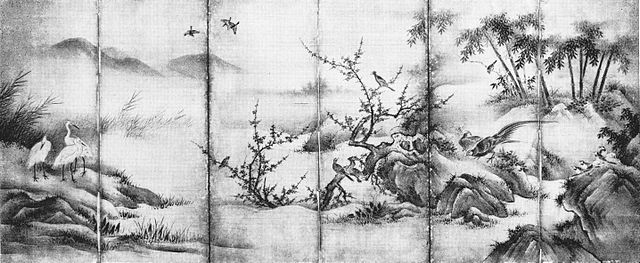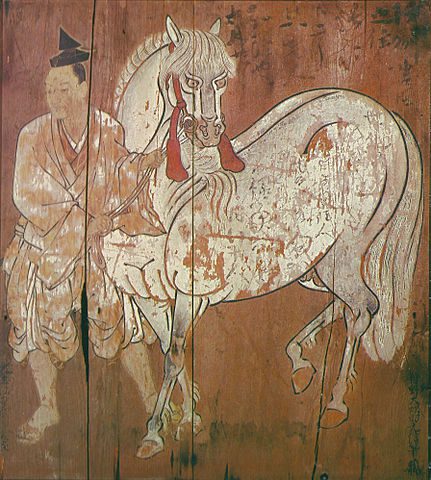Japan art and Buddhism: Kanō Motonobu (1476-1559)
Lee Jay Walker
Modern Tokyo Times

The artist and calligrapher, Kanō Motonobu, left a potent legacy in the realm of Japanese art throughout a vast historical period. Thus – vast numbers of Japanese artists were trained in the skills and styles of the Kanō school before the Edo Period (1603-1868) and throughout the historical timescale of the Edo Period.
The end of the Muromachi Period (1336-1573) witnessed the start of the rise of the artistic school of Kanō. Motonobu (1476-1559) was the son of the founder Kanō Masanobu. His father especially focused on Zen Buddhist art and other angles – for example, Buddhist deities and people on the path to Buddhahood (Bodhisattvas).

Motonobu’s artistic family heritage entailed that he was well versed in the field of art during his early childhood. His father installed not only great wisdom but developed his brushstroke and other areas. Equally, the natural flow of Buddhist influence – from faith to art – meant Motonobu interwove art, Buddhism, Chinese culture, and other important areas during his informative years.
The Met Museum says, “Motonobu, second-generation head of the Kano School of painting, laid the groundwork for the school’s centuries of dominance over mainstream Japanese painting. One of his many achievements was the adaptation of small-scale paintings (like fans and albums) associated with specific Chinese masters to large-scale painting formats such as folding screens and panels.”

Buddhist influence concerning the art of Motonobu – and the connections he had – are exemplified by the Kyoto National Museum. This museum says, “The abbot’s chambers of Reiun-in Temple, a sub-temple of Myōshin-ji, were given a major renovation in 1543 in preparation for a visit by Emperor Go-Nara. Apparently, this visit occurred because the Emperor was a devout believer in the teachings of Daikyū Sōkyū, the abbot (chief priest) of Reiun-in. Daikyū commissioned his friend Kanō Motonobu (second-generation master of the Kanō School, 1477-1559) and his associates to execute wall and door paintings, probably also taking into consideration that the Emperor was a great admirer of Motonobu’s work, known to have summoned him to the Imperial Palace to paint folding screens.”
Motonobu produced Buddhist art to secular landscapes – and depicted famous holy people from other faiths and philosophies – for example, Taoism (Daoism). He lived during a period that was blighted by wars. However, he continued to develop and prosper despite the changing power dynamics of the day.

PLEASE SUPPORT MODERN TOKYO TIMES by DONATING
Modern Tokyo News is part of the Modern Tokyo Times group
DONATIONS to SUPPORT MODERN TOKYO TIMES – please pay PayPal and DONATE to sawakoart@gmail.com
http://moderntokyotimes.com Modern Tokyo Times – International News and Japan News
https://www.pinterest.co.uk/moderntokyotimes/ Modern Tokyo Times is now on PINTEREST
http://sawakoart.com – Sawako Utsumi personal website and Modern Tokyo Times artist
https://moderntokyonews.com Modern Tokyo News – Tokyo News and International News
PLEASE JOIN ON TWITTER
https://twitter.com/MTT_News Modern Tokyo Times